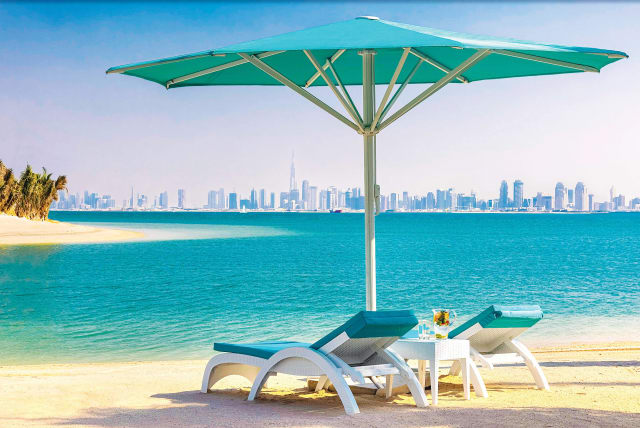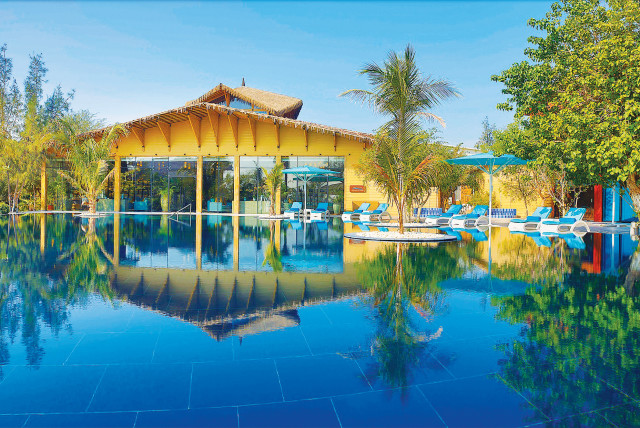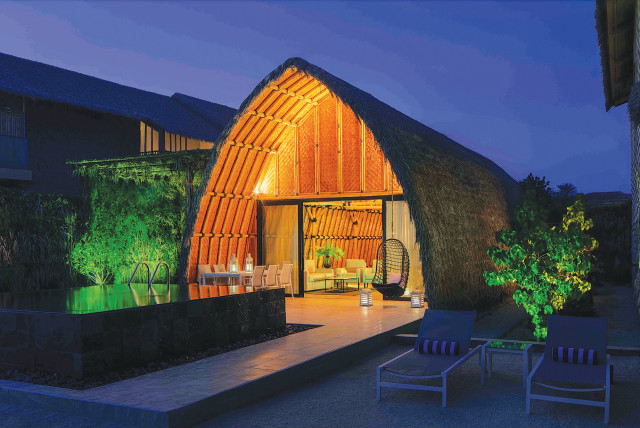The future of hospitality is found at Dubai's World Islands - review

Dubai is known as the city of innovation, with a forward-thinking focus on fostering an ecosystem of innovation and future-proofed business models.
The stunning images of the man-made islands in the shape of our planet on the shores of Dubai, taken from the International Space Station above Earth, blew my mind for a long time.
Considered an imaginary project, this mega-dream was launched more than 20 years ago. The Emirate has never failed to impress the world with its glamorous and impressive architectural ideas. For my money, this one was the most extraordinary: 300 artificial islands replicated the globe’s five continents. When the project was launched in 2003, it was hoped that celebrities and the super-rich would storm the future islands, carrying the names of continents and countries. Some reports revealed that numerous billionaires, racing drivers, and Hollywood actors conducted trips to explore it.
The project used 321 million cubic meters of sand dug from the Persian Gulf and 386 million tons of rock; 300 billion dollars were spent, and the islands indeed materialized. But the 2008 Wall Street financial crisis severely damaged the Emirates’ economy. Real estate was damaged. The project was put on hold.
Three years ago, a conspiracy theory gained momentum on TikTok, according to which the “mysterious” World Islands are nothing less than an “apocalypse safe haven” for the rich and famous. Later, reports emerged that the World Islands were sinking. Is it the unfortunate destiny of one of the most ambitious man’s construction projects?
Only one island was completed and open to tourists: Lebanon Island. However, two years ago, the Anantara World Islands Resort opened its doors on the South American section of the islands. This year, in early March, I decided to check it out for myself. I booked an Israir flight to Dubai International Airport, and three hours later, I found myself in a taxi on a quick ride to a Welcome Centre situated at the J4 Marina. Korean-born operations manager Katy Lee was waiting for me with a quick introduction. I was escorted to the hotel’s transportation jetty. The pleasant, 20-minute ride, starting from the marina and with a breathtaking view of Dubai, was unforgettable. The sound of drumming and clapping greeted us upon arrival. The hotel team was waiting, standing on the dock, presenting a White Lotus-type welcome ceremony. The moment I left the boat, my mind was totally unwound. I was about to immerse myself in unparalleled splendor. A unique experience had just begun.
The resort is small, with only 70 rooms, of which 38 are villas with a private, small pool in a bamboo-fenced yard. Although the fence has a gate, it remains mostly closed, as Muslim families find these villas extremely popular for maintaining their privacy. The entire resort is a sustainable, captivating oasis. Young palm and coconut trees and desert bushes that do not require much water dominate the scenery. The only water source for the vegetation is the filtered sewage. The irrigation is conducted with the familiar dripping system, invented in Israel. Between the villas, peacocks, ducks, and turkeys run freely, while gazelles gallop and frequently hide from sight.
The main artificial lagoon is calm and relaxing. The water is shallow, and one can swim easily or enjoy non-engine water sports. What is most amazing is the fluffy sand that dominates the waterfronts and trails. Apparently, Anantra is a Thai-based brand, and high-grade silica sand is imported from Phuket Island. Several times a year, more sand is brought to rejuvenate the beach as the blowing wind spreads it to the water.
About the resort
The Anantara World Islands resort is a luxury product, with 160 outgoing employees working there, almost all of them from Asian islands. Electrical Bangkok-style tuk-tuks are used for the speedy cleaning of the villas. I prefer to relax by the magnificent pool, constructed with black tiles and surrounded by desert trees. The daily service offered for guests includes the cleaning of sunglasses during relaxation time and the distribution of watermelon “slushie zeeps.” The young staff from the Philippines, Indonesia, and Thailand certainly know how to please the guests.
When I ask Katy Lee about the potentially submerging World Islands, she shrugs her shoulders. Lee is more used to guests comparing it to Maldives resorts. We are not a resort in the Indian Ocean. “Surely, the potential is there, but the hotel is too young, and we have challenges to overcome daily,” she says. “Transportation is conducted by boats and jetties, and the sea might be stormy and disrupt the routine.”
“Sustainability is our major DNA. It is a combination of UAE regulations and the Anantara hotels and resorts brand philosophy,” Lee adds. “Guests are very appreciative of our efforts, and in the long run, when the island will be totally inhabited with additional villas, gardens, and animals, the resort will certainly reach new heights.”
THE RESORT RESTAURANTS are positively surprising. Hamburg-born Christopher Bromund, the executive sous chef, is proud of the fresh meat and fish products purchased in Oman, Canada, and even Australia. “Our fruit, vegetables, and herbs come from the water from the greenhouse, and a similar facility is already being built on the nearby island,” he reveals.
The Greek Mediterranean restaurant offers impressive indoor and outdoor Dubai skyline views. The Greek-inspired salads, mezzah, and grilled options, headed by the seafood tower dish, are a gastronomical delight. A second outlet offers an amazing array of Arabic and Indian dishes. The Joojeh chicken with Iranian spice and saffron and the Kofta Khashkhash minced lamb with Arabic spices are of the highest quality.
This resort on the remote World Islands is, in fact, a popular destination, mainly for expatriates who live in the city and need to unwind in a natural environment. It is a popular venue for marriage proposals, and I can definitely attest to that. Dubai residents arrive by boat just for dinner and return home. During New Year’s Eve, it is the most popular place to enjoy the fireworks over the Burj Khalifa. Neglected, decayed, deserted, and undervalued are irrelevant descriptions of the World Islands of 2024.
Is the resort a model for the future of hospitality? Dubai is known as the city of innovation, with a forward-thinking focus on fostering an ecosystem of innovation and future-proofed business models. Twenty-five years ago, the world was skeptical of the Palm Jumeirah, the man-made archipelago that resembles a stylized palm tree for exclusive housing and posh hotels, but upscale hotels are extremely successful there today, and hardly any new developments are available. Most of the World Islands are potentially accessible, opening the possibility for new, magnificent resorts. Anantara showed vision by getting involved with this type of hotel. Many will surely follow.
In 2023, with more than 600 upscale hotels, Dubai welcomed more tourists than ever before. More than 17 million international overnight visitors arrived in the Emirate over the course of the year, according to the latest data published by the Department of Economy. Dubai is definitely doing something very right.
The writer is the Travel Flash Tips publisher.
Jerusalem Post Store
`; document.getElementById("linkPremium").innerHTML = cont; var divWithLink = document.getElementById("premium-link"); if (divWithLink !== null && divWithLink !== 'undefined') { divWithLink.style.border = "solid 1px #cb0f3e"; divWithLink.style.textAlign = "center"; divWithLink.style.marginBottom = "15px"; divWithLink.style.marginTop = "15px"; divWithLink.style.width = "100%"; divWithLink.style.backgroundColor = "#122952"; divWithLink.style.color = "#ffffff"; divWithLink.style.lineHeight = "1.5"; } } (function (v, i) { });


